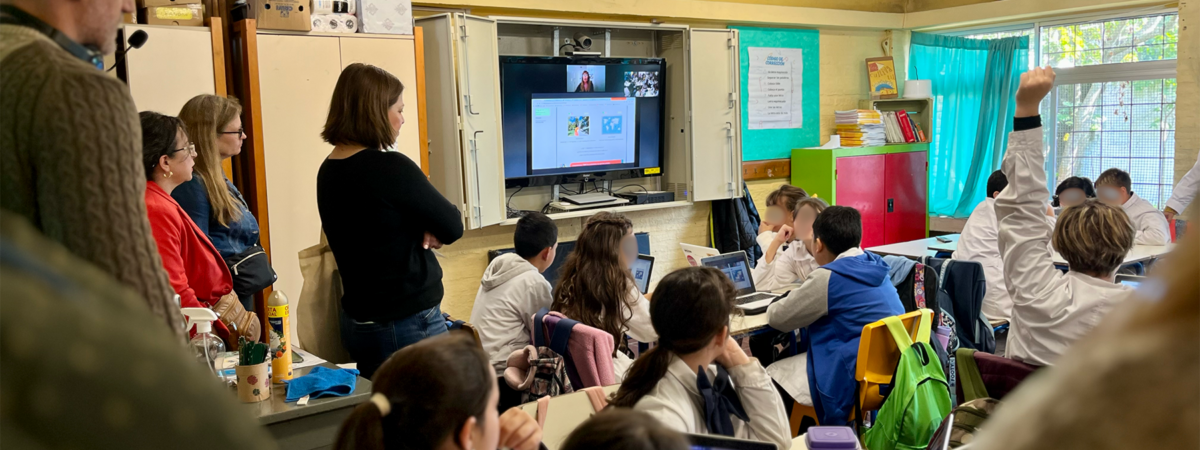
Bordered by Brazil to the north and Argentina to the west, Uruguay is a nation of 3.2 million people in South America that has spent nearly two decades engaged in a country-wide educational digital transformation. Through remarkable coordination across systems, resources, policies, and people, Uruguay began providing a digital device to every student and ensuring internet connectivity in school buildings in 2007.
Since then, the country has evolved into a robust education ecosystem that provides digital tools, platforms, and professional learning for students and teachers nationwide. While this transformation involved countless individuals, none of this would have been possible without Ceibal.
In May 2025, more than 20 leaders from the Global Cities Education Network and the League of Innovative Schools convened in Montevideo, Uruguay, for an international study tour to explore this digital transformation as part of Digital Promise’s Future of Tech-Enabled Learning Implementation Cohort. While there, they heard directly from Ceibal leaders about their unique approach and experienced the impact of its work first-hand.
Ceibal is Uruguay’s publicly funded digital technology center for education innovation, serving more than 675,000 students and 45,000 teachers. Since 2007, they’ve coordinated across government departments and with private sector partners—from telecommunications and energy companies to postal services—to deploy more than 2.9 million devices while ensuring connectivity in every classroom—urban and rural alike.
But their real innovation came from recognizing that digital transformation involves three interconnected challenges, not just one. Beyond digital access (devices and connectivity), they tackled digital use (teacher professional development) and digital design (ensuring students actively create with technology rather than just consume).
This realization led to Ceibal’s evolution from device provider to comprehensive ecosystem builder, focusing on teacher training, research-based pedagogies, and innovative programs like computational thinking pathways and blended learning initiatives.
Despite all their achievements, Ceibal considers their greatest innovation to be “solving the sudoku”—taking a systems-level approach to digital transformation where solving one problem reveals new challenges and possibilities.
This approach required establishing coherent systems, resources, and policies grounded in human relationships and focused on improving student outcomes. It took substantial time and trial-and-error, but generated invaluable insights. Here are five key takeaways from Uruguay’s digital transformation journey:
Systems-level digital transformation isn’t a linear journey or final destination—it’s a decades-long process requiring daily commitment and bold vision. While each system’s approach will differ, examining how communities worldwide innovate to close digital divides helps us reimagine 21st-century teaching and learning in our own contexts.
Want to learn more?